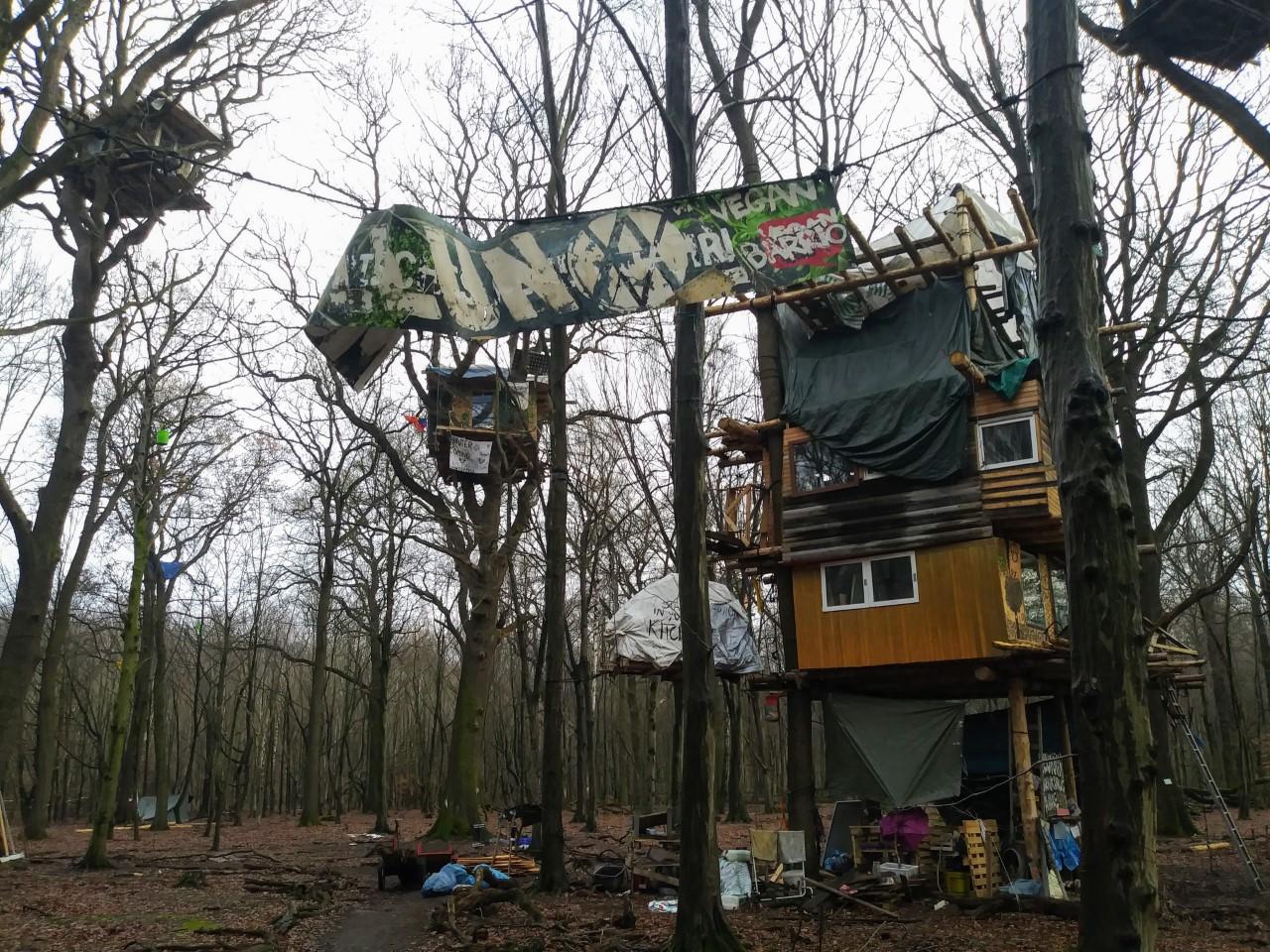I visited the Hambach forest occupation on a whim. Initially, I was unsure whether I could consider it an intentional community. I also felt deterred when I read reports online of people having their travel gear confiscated at a police checkpoint upon entering. But since Hambi was on the way to my next stop, I would have been a fool not to check out this anarchist community.
There was, as expected, a company patrol officer monitoring the entrance road to the forest when I arrived. The road barriers were ironically spray-painted, “Fuck cops,” and “Killing cops is fun”. Hambach protestors later explained they hate cops foremost because of the riot police they deal with. These people train specifically to beat people up because they enjoy doing it. When cameras are not present, they claim, riot police take the fullest advantage of this opportunity.
The camp I stayed at, like all the others at Hambach, was composed of treehouses upwards of 25 meters high. These structures are in place to combat police evictions, in which officers have pulled sleeping victims from their tents to arrest them. However, police are not allowed to climb more than a few feet for insurance reasons. Treehouses require special climbing units with cranes in order for attempted evictions.
The protestors I met were friendly but also careful not to give me information that could be used against them. I was never given information such as names, the number of occupants or how long each of them had been there. The informant I talked most with wore a mask he never took off, as did the others that I encountered..
Here is the low-down I was given on Hambach. People have been squatting the forest since 2012 when Germany’s second largest energy producer RWE AG began construction of a surface mine. Brown coal, an inefficient resource to produce and the form of coal most harmful to human health, exists beneath the trees of Hambach.
Protestors are still there despite eight years of police raids and mass arrests. They see their effort as a stand against our corporate culture causing climate change. The protestors also view their occupation as part of a larger movement of living with no government, capitalism, racism, speciesism or sexism.
I spent much of my time at Hambi eating donated and dumpster food around an outside fire the size of a soccer ball while my feet went numb. We had many laughs, though, and I found it inspiring how tough and committed these people were to a cause.
I eventually visited the open-pit mine in the dead of night with a guide. The protestors refer to it as Mordor, an uncanny reference to the hellish landscape in The Lord of the Rings. What I witnessed is now my mind’s archetype of climate apocalypse. The pit was wider than my vision could detect. At its center stood an imposing tower with beaming white lights, emitting the sound of a factory. Gigantic diggers, taller than Hambach’s treeline, worked late into the night, eating the landscape. Where the rest of the forest once stood was devastation.
Hambi is not the only one, either. There are smaller, younger communities where active confrontation with police over climate change is happening. Hambi has been quiet after a journalist fell and died during a police raid in the fall of 2018, and a subsequent court ruled to discontinue cutting for matters of conservation. A final court hearing will occur in early 2020.
I believe we will see more of these camps. There will be others who are fed up with complacency and resort to anarchy in an attempt to address an impending climate disaster. People come and go from these camps frequently. And while the political struggle is the focus, the community is a byproduct. It is a hard way of life, and it is not meant to be a permanent
living situation. Nevertheless, it is a place one can go if they desire to partake in the frontline fight against climate change. For some, like those at Hambi, it is the only rational and moral way to go about living amidst this current state of affairs.






















































